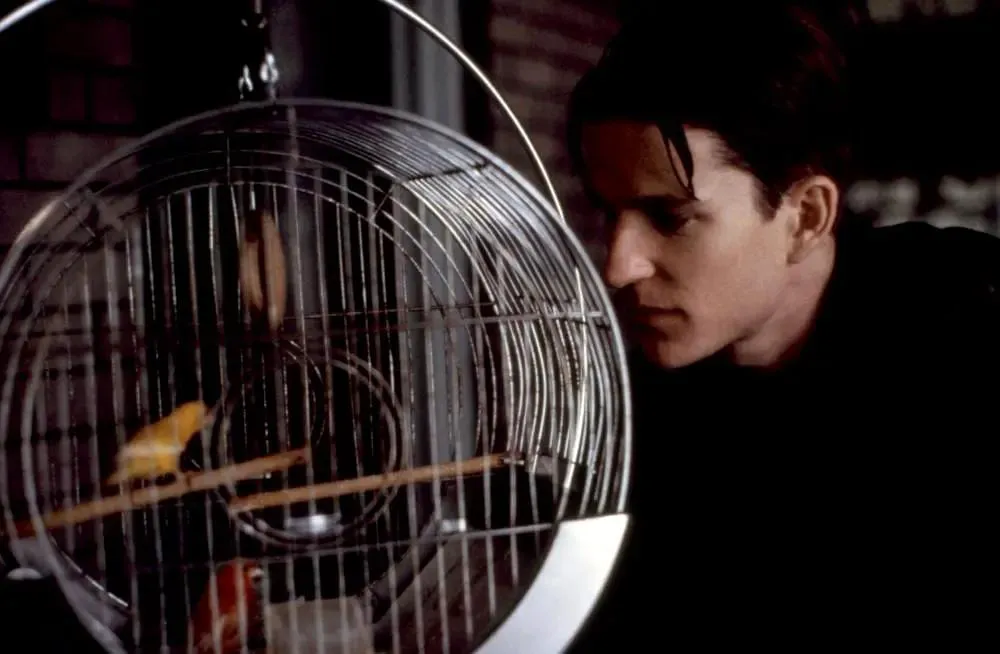In the realm of cinematic storytelling, few films delve as deeply into the human psyche as Alan Parker’s “Birdy.” This compelling drama intricately weaves the tale of two childhood friends, Al and Birdy, exploring themes of trauma, identity, and the search for meaning.

A Tale of Two Friends
Al, scarred by his experiences in the Vietnam War, returns home grappling with severe psychological trauma. Meanwhile, Birdy immerses himself in the study of birds, embarking on a quest for self-discovery that blurs the lines between reality and fantasy.
Exploring Human Nature in “Birdy”
“Birdy” offers a profound exploration of human nature through its protagonists.
Al: The Wounded Veteran
Al, a young man from an ordinary background, forges a close bond with Birdy during their childhood. His experiences in the Vietnam War leave him deeply scarred, manifesting as obsessive-compulsive disorder. He becomes consumed by cleanliness, isolating himself within his own space. Despite his trauma, Al retains his inherent goodness, bravery, and resilience, demonstrating courage on the battlefield and contributing to his country.
Birdy: The Seeker
Birdy, an independent and introspective individual, dedicates himself to the study of birds, viewing it as his life’s purpose. He seeks self-identity through mimicking avian behaviors and communication. Transforming his room into an aviary, he interacts with Al using bird-like gestures and sounds. Birdy’s imaginative pursuits, while creative, often lead to feelings of isolation.
The Struggle for Identity
The protagonists’ personalities and actions reflect their struggles with identity. Al’s war trauma shatters his sense of self, transforming him into a PTSD sufferer clinging to obsessive behaviors to maintain control. This shift isolates him from family and society, forcing him to confront his vulnerabilities and redefine his identity.
Birdy’s quest for self-discovery leads to conflict with the outside world. His imaginative behavior is often misunderstood and rejected, leading to loneliness and a need to re-evaluate his identity and direction in life.
Mental Illness as a Lens
“Birdy” confronts the impact of mental illness on identity and self-perception.
Birdy’s Obsession
Birdy’s obsession with birds transcends normal interest, impacting his life and identity. He retreats into a bird-like existence, feeding birds and attempting to fly, causing confusion and distress to himself and those around him.
Al’s Trauma
Al exhibits symptoms of mental illness, including nightmares and PTSD, stemming from his war experiences. These symptoms affect his well-being and his understanding of his own identity.
The mental illnesses of Birdy and Al significantly affect their sense of self. Birdy’s attempts to find identity through birds are met with rejection, leading to isolation and an identity crisis. He questions his own nature, needing to redefine his sense of self.
Al’s mental illness leads him to question life and his own value, prompting a search for renewed identity and self-worth.
“Birdy” uses the protagonists’ mental illnesses to explore identity and self-worth, offering insights into the impact of mental health on self-perception.
The Journey of Identity Formation
Birdy’s journey of identity formation unfolds in three stages:
Shared Fantasy
Initially, Birdy and Frumm share a strong sense of identity, living in a fantasy world centered around their fascination with birds. Their identity is secure within this shared obsession.
Losing Touch with Reality
As Birdy’s mental illness deepens, he loses touch with reality, becoming isolated and unable to find his identity. He attempts self-harm and escapism to cope, but these actions fail to provide a sense of self.
Rediscovering Reality
Through therapy, Birdy regains his grip on reality and begins to explore his identity. He discovers his value lies in his love for life and pursuit of beauty, realizing he doesn’t need to be a bird to find himself.
Interplay of Identity, Humanity, Mental Illness, and Self-Worth
Identity, humanity, mental illness, and self-worth are interconnected in “Birdy.” Birdy’s obsession with birds reflects his longing for freedom, a fundamental aspect of humanity. His mental illness, stemming from trauma, leads him to retreat into a self-created world, impacting and distorting his identity.
Birdy’s self-worth is tied to his ability to emulate birds, leading him from self-doubt to confidence. These factors interact to shape his journey, allowing him to break free from identity constraints and find his true self.
Identity is a complex psychological phenomenon involving self-awareness and social role recognition. Birdy’s identity struggle is influenced by his humanity, mental illness, and self-worth.
Birdy’s human traits and actions impact his identity, reflecting his desire for freedom and his limitations. His mental illness, stemming from war trauma, isolates him and disrupts his ability to communicate, further confusing his identity.
Birdy’s self-perception plays a crucial role in his identity struggle. His confusion about his value and lack of confidence complicate his sense of self.
“Birdy” highlights the importance of identity in personal growth and offers insights into navigating identity issues.
Identity is a gradual process of self-understanding and social positioning. Birdy’s journey involves overcoming obstacles and discovering his inner strengths, ultimately forming his identity.
The film connects Birdy’s identity issues with his humanity, mental illness, and self-worth. Identity is multifaceted, influenced by inner qualities, mental state, and self-perception.
A clear identity, based on self-awareness and value, is essential. Identity is not static but evolves with personal growth.
In seeking self-identity, we must consider our needs and values, refining our identity through interactions with others.
“Birdy” explores the importance of identity in personal development and offers guidance on addressing identity issues.